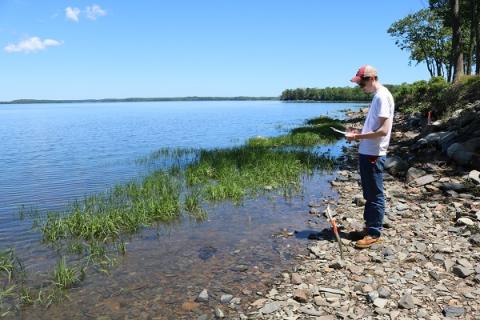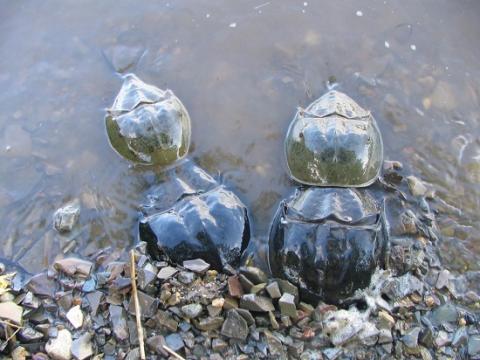
What are spawning horseshoe crab surveys?
Horseshoe crabs are “living fossils” – they have been around since the age of the dinosaurs. In modern times, their unique blue blood has become important to the biomedical industry to test for impurities in drugs, and they serve as bait in the eel and whelk fisheries. Because of over harvesting for these industries, their population is in jeopardy. Many states along the Atlantic coast have developed programs to manage their horseshoe crab populations.
In spite of this interest, little is known about the population of horseshoe crabs in New Hampshire’s Great Bay Estuary. Citizen scientists are playing a big role in filling in this critical gap in knowledge. Volunteers have partnered with UNH researchers to study the population of Great Bay horseshoe crabs in 2012, 2013, and from 2016 through the present.
What do horseshoe crab volunteers do?
During spawning, horseshoe crab survey volunteers sign up for survey shifts, which take place once daily, seven days per week, scheduled to correspond with low tides. Volunteers will work with a UNH researcher to look for and count spawning horseshoe crabs.
After being trained, volunteers can sign up to fill horseshoe crab survey shifts. Each shift takes about 15 minutes to complete, and volunteers can sign up for as many or as few shifts as they’d like.
Interest in finding and counting horseshoe crabs in their natural environment
- Learn about and observe a fascinating coastal species
- Contribute to the knowledge and management of the Great Bay’s horseshoe crab population
Join our spawning horseshoe crab survey efforts!
Sign up for our monthly email newsletter to find out when this year’s training goes on the calendar, or contact Wells for more information on how to get involved.
Links, resources, and partner organizations
Check out this publication from NH Fish and Game about the fascinating life cycle of horseshoe crabs. The research, funded in part by N.H. Sea Grant, was published in the journal Estuaries and Coasts.
Volunteer Resources
Stay in touch with the Great Bay horseshoe crab project by following their Facebook page.
